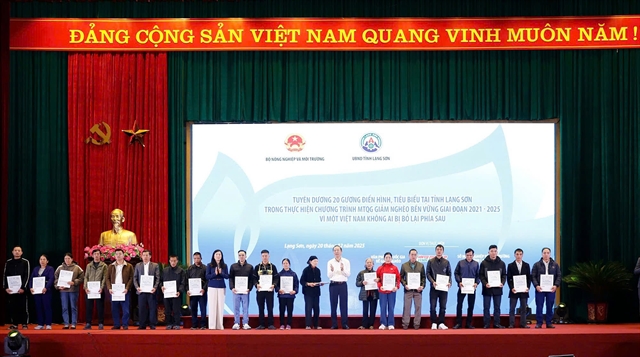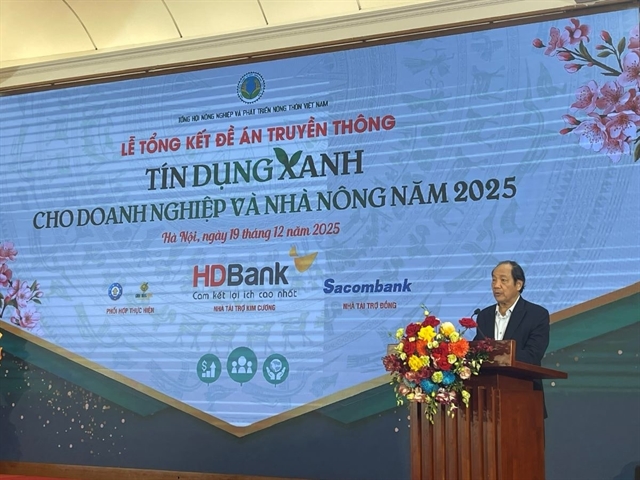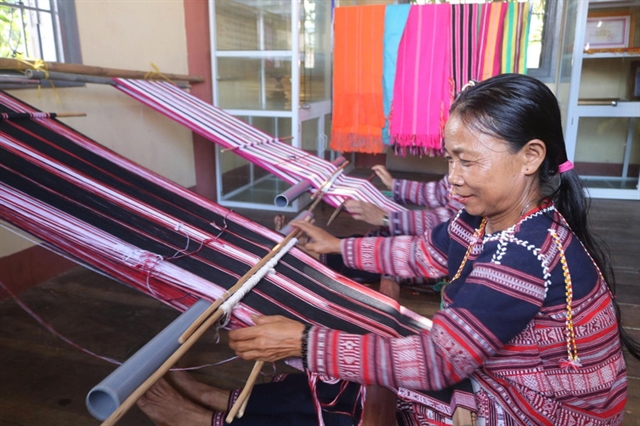 Economy
Economy

 |
| Start-ups in the semiconductor and AI sectors are provided with workspace at the Centralised Information Technology Zone in Đà Nẵng Software Park 2. VNA/VNS Photos |
As the global semiconductor industry gains rapid growth, Việt Nam is stepping up efforts to deepen its integration into the global value chain, with the ambition of becoming a key player in the sector, according to a recent conference in Hà Nội of the National Steering Committee for Semiconductor Industry Development.
Citing data from the US Semiconductor Industry Association, Deputy Minister of Finance Nguyễn Đức Tâm said at the conference the industry was expected to grow by around 20 per cent in 2024 and a further 12 per cent in 2025, bringing its total market value to an estimated US$700 billion.
The surge was being fuelled by rising demand in key areas such as artificial intelligence, data centres, electric vehicles, and 5G technology.
Recognising the strategic importance of semiconductors, the Vietnamese Government has introduced a range of policies to accelerate domestic industry development, according to Tâm. These include resolutions and the newly enacted Digital Technology Industry Law and the Science, Technology and Innovation Law. The semiconductor sector is also listed among 11 strategic technology areas under national development plans.
Việt Nam currently hosts more than 50 chip design companies employing an estimated 7,000 engineers, according to Tâm. Around 15 firms are involved in chip packaging, testing and equipment manufacturing, with a workforce of approximately 6,600 engineers and over 10,000 technicians. The country is also beginning to participate in higher value-added stages, such as component manufacturing and chip testing.
A key milestone is the upcoming launch of Việt Nam’s first chip production facility by Viettel. The country has also been chosen as a host for one of the world’s leading semiconductor exhibitions, further cementing its status as a rising destination for global semiconductor investment, heard the conference.
Particularly notable is the presence of major technology corporations Nvidia and Qualcomm, which have selected Việt Nam as a strategic hub for AI and chip R&D. Their investment is seen as a pivotal achievement, helping to attract high-value supply chain shifts and positioning Việt Nam more prominently on the global technology map.
Human capital development
A vital component of Việt Nam’s semiconductor strategy is Programme 1017, which aims to develop the workforce for the industry through 2030. The programme has completed nine of its 34 tasks, with another 25 currently underway, according to Tâm.
Việt Nam’s semiconductor workforce includes about 7,000 engineers in chip design, 6,000 in packaging and testing, and 10,000 technicians in equipment and material manufacturing. A network of more than 100 Vietnamese experts around the world has also been established.
In training, over 320 university lecturers have received specialised instruction and about 6,300 undergraduates are currently studying semiconductors.
More than 12,000 students in related fields are expected to transition into the sector through supplementary training. Some 600 master's students and 120 PhD candidates are in training, alongside over 1,600 graduates of short-term technical programmes.
Việt Nam now has 166 higher education institutions offering semiconductor-related courses, and ten small-scale semiconductor labs have been built for hands-on training. The Ministry of Finance has also launched the country’s first Semiconductor Incubation and Development Centre.
To support these efforts, the ministry has secured access to 1,000 chip design and semiconductor technology licences, valued in the tens of millions of US dollars, from global firms including Cadence, Siemens, ARM and Lam Research. These resources will support training at more than 30 universities. International partners such as Japan, Chinese Taipei and the EU have committed to providing around 1,000 scholarships annually.
Cooperation between government, academia and businesses has been growing. Companies such as Coherent, Marvell, Viettel, FPT and Phenikaa are actively involved in training and research at the university level. The National Innovation Centre and various ministries have also played a key role in ensuring Programme 1017 remains on track.
As part of its development strategy, the Ministry of Finance has proposed attracting selective foreign direct investment (FDI), with a goal of establishing 100 chip design companies, one small-scale chip fabrication facility and 10 chip packaging and testing plants. It also plans to train 1,300 lecturers and establish four national-level shared laboratories to support semiconductor R&D and training.
 |
| Participants examine innovation spaces by tech firms at the semiconductor and AI policy forum on March 14 in Hà Nội. |
Deputy Minister of Education and Training Phạm Ngọc Thưởng said the ministry had moved swiftly to implement the Prime Minister’s directives by issuing detailed guidelines for universities and colleges.
Nine higher education institutions had submitted proposals to establish semiconductor laboratories. These had been reviewed and forwarded to the Ministry of Planning and Investment (now the Ministry of Finance), where an appraisal council was conducting detailed assessments.
In May, the Education and Training Ministry issued standardised training guidelines for semiconductor design, marking an important step in aligning curricula nationwide. Institutions were now revising their training programmes to comply with these new standards under Programme 1017.
University admissions also reflect growing interest in semiconductors and related fields, according to Thưởng.
In 2025, 222,454 students registered STEM majors as their first choice, an increase of nearly 42,000 compared to 2024. Computer science and IT drew more than 54,000 applicants, and AI saw a major surge with 2,754 first-choice applications, far exceeding the previous year’s total.
The ministry is also working with universities and enterprises, both domestic and international, to organise workshops and forums to promote knowledge sharing in chip design and workforce training.
Addressing challenges
Despite strong progress, the Ministry of Education and Training acknowledges uneven capacity among universities, with many still lacking experience and infrastructure in semiconductor education. Gaps remain in academic ecosystems, technology readiness and international cooperation.
To address this, the ministry proposes expanding partnerships with foreign institutions to exchange faculty and students and improve curriculum design. It also advocates greater coordination among domestic universities to avoid duplication of effort and to form a cohesive national training ecosystem.
The ministry has also called on the Ministry of Finance to expedite approval for nine laboratory projects submitted in late 2024. These facilities are considered critical for enhancing research, practical training and enabling students and lecturers to access the latest technologies directly within academic environments.
Speaking at the conference on August 4, Prime Minister Phạm Minh Chính, who is also the head of the National Steering Committee for Semiconductor Industry Development, said that semiconductors would be a key pillar of the Fourth Industrial Revolution, particularly in artificial intelligence. He added that Việt Nam must not be left behind if it aims to build an independent, self-reliant and globally integrated economy.
Chính outlined eight key directions in the sector, namely stronger awareness, renewed thinking, more decisive action, improved institutions, progress in training and infrastructure, expanded international cooperation, growing interest from major partners and active engagement from universities and localities.
However, he also pointed out persistent challenges, including limited funding, institutional hurdles, slow progress, weak technology transfer and loose collaboration between government, academia and industry.
The PM set a clear goal that by 2027, Việt Nam must be able to design, manufacture and test key semiconductor chips. VNS




